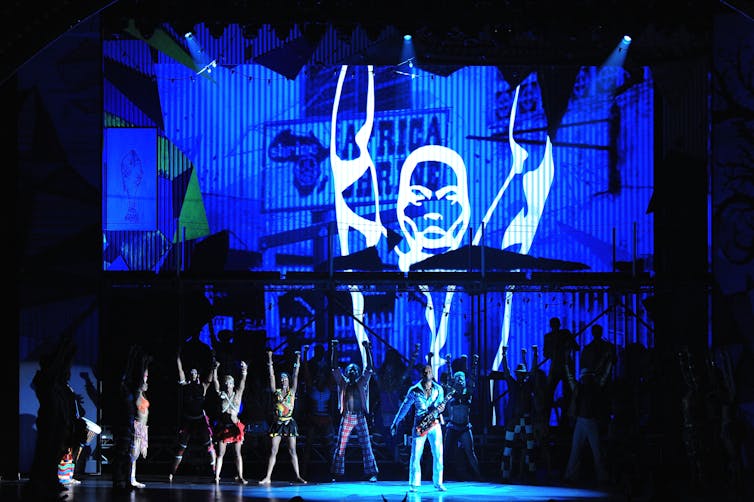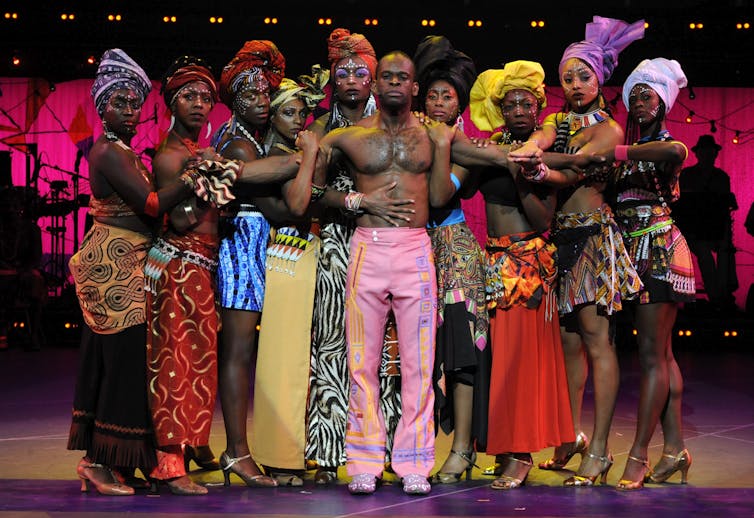
Garhe Osiebe, Rhodes University
Decades after his death, Fela Kuti, Nigeria’s most famous musician continues to live on through his art. Afrobeat, a genre he pioneered, has transcended generations after him, existing in varying forms. Contemporary African pop stars are sampling his work in new records. Much of that music is called ‘Afrobeats’ today, (the ‘s’ is important) A new genre, partly inspired by Fela’s work. It’s the current flavour of Lagos, and the rest of the continent, where Nigerian pop music maintains a strong presence.
But how do these musicians portray this legend in their work? How do elements of Fela Kuti’s music get reproduced? Does his conscious approach to art travel through the years into today’s hedonistic popular culture?
A Brand New Life
In 2019, Nigerian singer
, Savage explained that she chose to adopt some Afrobeat elements within the song, to draw attention to the continued plight of Africans suffering and smiling.Four years earlier, Nigerian singer
. Savage, Niniola and Niyola all drew from Fela in enriching their music for audiences.This shows how female Afrobeats artistes—who we can refer to as the daughters of Fela—have kept Afrobeat alive. Through highly emotive records, infused with socio-cultural messaging and instrumentals, they are extending its life and relevance to a younger crowd.
How have the male Afrobeats artistes fared as ‘Sons Of Fela’? Nigerian pop star
, released in 2019, incorporated elements of Afrobeat in its production, but the essence of Fela’s message was not infused. For lyrics, he looked elsewhere.Recently, rapper Naira Marley altered texts from Fela’s 1978 ‘Shuffering and Shmiling’ to fit into the polarizing 2019 single
For a song that is considered a subtle promotion of internet scams, using Fela’s lyrics came across somewhat as a negative.Prior to the emergence of Wizkid and Naira Marley, veteran singer
Idibia’s 2014 ‘Jeje’ is also notable for simulating certain Fela sounds and co-opting the call and response technique of Afrobeat. While trying to shake off public criticism of his personality at the time, 2baba arranged cuts from a Fela interview, for the intro to the video of his 2017 single ‘Holy Holy’.While 2baba would have his audiences believe that his attempt at damage control was in tribute to Fela, local audiences can tell a genuine dedication when they hear one. A good case can be heard on Oritsefemi’s
off the 2013 album, Money Stop Nonsense. People believe ‘Double Wahala’ is a worthy Fela tribute for two reasons: The first is the effort to synthesize a recognizable Afrobeat melody that invokes dance movements that are reminiscent of Fela. A simpler reason is provided at the intro to ‘Double Wahala’. Oritsefemi clearly states that “this song is dedicated to Fela Anikulapo-Kuti”.However, there is more to ‘Double Wahala’ than its melody and dedication suggest. The phrase ‘Double Wahala’ originally belongs in Fela’s
(1990) which is a remake of 1975’s ‘Confusion’. In the former, Fela sings, “Double wahala for dead body/And the owner of dead body”. Oritsefemi’s appropriation of a phrase from Fela’s chorus in writing his for ‘Double Wahala’ was rewarded widely. The song became a mainstream favourite, and won him awards including the 2014 song of the year at the prestigious Headies award ceremony.
A while ago, artistes like Olu Maintain (Alo, 2001) and Dagrin (Democracy, 2010) appropriated Fela to fortify their delivery of protest texts. Through the last decade, however, Afrobeats artists appreciate that Fela was a lot more than protest. He was, after all, a man of pleasure man who once married 27 wives. For confirmation, look to young upstart Omah Lay, who likens his genitalia to Fela Kuti’s famous large 'Jumbo’ blunts, on his song ‘Yeyeye.’ As does the South African rapper AKA through ‘Fela in Versace’ (2018).
And how about the biological children of Fela? His sons Seun and Femi continue to uphold Afrobeat. Seun Kuti inherited Fela’s Egypt ’80 band and family name. Femi Kuti is renowned for his performance of Afrobeat around the world, and has been in contention for the Grammys, four times.
Conclusion
Fela Kuti created a rich body of work that defies time. Each generation after him has sampled and referenced Afrobeat as a valuable addition to the music from Nigeria. As sounds across the continent continue to evolve, more artistes are bound to look Fela’s way for inspiration and assistance. They will surely have more than enough to work with.
Garhe Osiebe, Postdoctoral Research Fellow, Rhodes University
This article is republished from The Conversation under a Creative Commons license. Read the original article.

